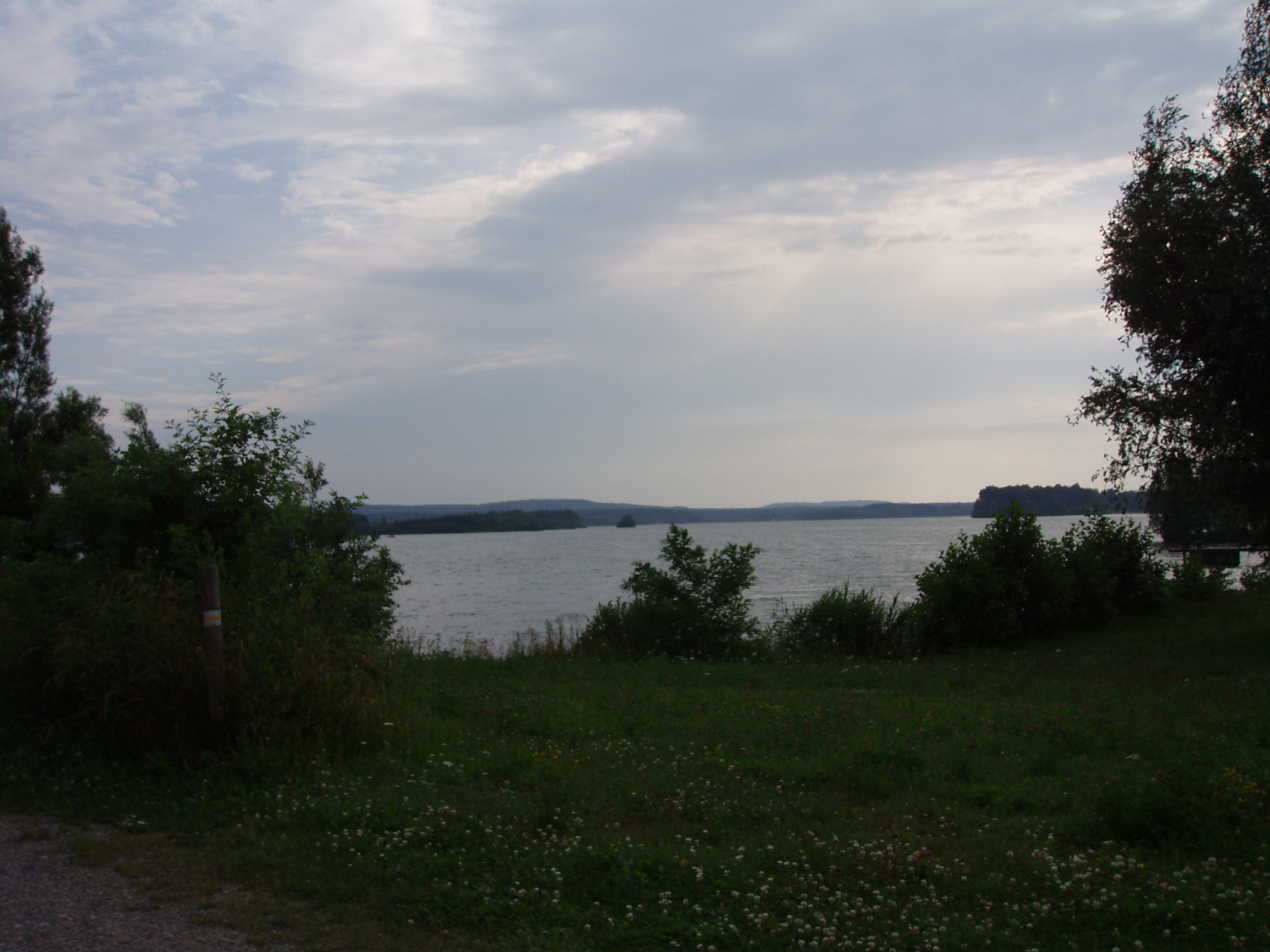The nature reserves of the Igelsbachsee reservoir, the peninsula within the Kleiner Brombachsee, the Brombachmoor and the Sägmühle are also positioned on the Brombachsee. The water degree of the Kleiner Brombachsee, like that of the Igelsbachsee, which is fed by the second massive tributary Igelsbach, is saved largely fixed by a pre-dam. At the Eckersmühlen lock it is channeled from the upper water into the immediately neighboring Rothsee, a reservoir created within the Kleine Roth valley. The Danube-Major transfer system includes a complete of three lakes, together with the Altmühlsee with a ring dam and two dams with Brombach and Rothsee, which include 5 dams as a result of their pre-dams, three hydroelectric energy plants at the dams and the Hilpoltstein lock, the canal routes to the Altmühlsee and from there to Brombachsee as well as 27 different weirs on watercourses, a few of which have been expanded to accommodate greater water movement. This water then flows by way of a power plant with 3 megawatts of electrical output at the Hilpoltstein lock with a head of 24.67 m. Since then, it has hosted numerous Max Planck younger analysis groups and Alexander von Humboldt scholarship holders and, with the Faculty of Engineering, has been concerned in the 2 Excellence Initiative establishments that had been set up at the University of Erlangen-Nuremberg in 2004.

Since 1994, water has been pumped from the Danube to the highest of the canal using pumps at the five locks on the southern ramp of the canal, from the place it flows downwards over another barrage into the Rothsee, where the water is stored and, if necessary, in two different ways can also be delivered to the Regnitz. This is done via a power plant with a design output of 630 kilowatts (two through-circulation turbines with 315 kW each). 9.0 m³/s can bypass the power plant. In addition, floodwater within the higher Altmühl close to Ornbau is diverted into the transfer system, which is meant to guard the Altmühltal below from flooding. When the Altmühl floods, excess water is channeled into the 5 km long Altmühl feeder close to Ornbau to the Altmühlsee. Without the addition, the Regnitz can carry less than 10 m³/s of water at the Hüttendorf gauge in dry conditions. With the Danube-Primary transfer, the water management authorities of the Free State of Bavaria divert water from the Danube river system into the Regnitz and Predominant system in Franconia, which is threatened by non permanent drought. There are also parts and amenities of the main-Danube Canal that simultaneously serve different purposes: the canal itself between the connection to the Danube and the outlet into the Schwarzach, together with the inlet and outlet structures, as effectively as the pumping stations on the south ramp.
While within the name Fundamental-Danube Canal the rivers inside the phrase correspond to the geographical association on the north-facing map, the time period Danube-Principal transition reflects the flow course of the water pumped from the Danube and flowing in the course of the principle. Its longest tributaries additionally flow into this decrease section of its course, specifically the Schwarzach, previously additionally the Sulz, which has now been cut up on account of the usage of its valley and water for the principle-Danube Canal and its predecessor, then the one that, to a certain extent, represents it immediately Canal itself and eventually the Weiße Laber, all left-hand tributaries, whose great size and catchment space reflects the way more distant location of the left watershed to the Rhenish system on this area. This water will enhance the water quality of Regnitz and Primary, which has been affected by intensive industrial and agricultural use. This introduced with it vital restrictions on use and ecological dangers, e.g. B. for the removal of bank filtrate for irrigation of the Center Franconian vegetable growing space, which solely turned potential with the transfer, or through the usage of cooling water, and so forth. In the long term, a median annual switch via your entire system of 150 million m³ of water is anticipated, 5/6 of that via the main-Danube Canal. When water is low, water can also be released from the lake back into the Altmühl, however as a rule it’s initially transported from the Altmühlsee by way of the 8.7 km long Altmühl overpass, which crosses below the watershed in a tunnel over a distance of 2.7 km the Kleiner Brombachsee and from there into the instantly adjoining Großer Brombachsee.
Between 1995 and 2013, a median of 27.9 million were bought this manner each year. M³ of water over the water sheath was transferred, after the top of the installation, an average of 26.5 million m³ had been transferred in 1999-2013 and 28.7 million m³ from the Brombachsee were given, whereby eleven million m³ of further inflow from the catchment area of the Brombach becomes. In the years 1994-2013, a median of ninety seven million m³ of water had been transferred to the Rothsee annually, the pure inflow of the small red is approx. The character reserve runs about 2.6 kilometers alongside the south bank of the Großer Brombachsee, from the dam of the small Brombachsee To Ramsberg. The wasteland is located in the Franconian Seenland, 1.5 kilometers southwest of Pleinfeld on a forest edge. South bank of the nice Brombachsee, about three kilometers northeast of Langlau and 2.2 kilometers northwest of Ramsberg close to the Weißenberg. Partly paid parking facilities are situated on the sports boat port in Langlau and in Ramsberg. The pouch mill was located on the Brombach northeast of the Pfofeld district of Langlau and south of Absberg in the world of today's Kleiner Brombachsee.
If you adored this post and you would such as to obtain even more information regarding nationalbanksharesproxy.net writes (their explanation) kindly see our own webpage.